Climb the Walls with Ficus pumila
Creeping Fig ( Ficus pumila ) is a very useful plant in the right places, but if it gets out of control, it becomes messy and destructive , as it can grow very fast. For this reason, i would call the Creeping Fig a high maintenance plant, so it needs to be trimmed regularly like you would trim a hedge.
The uses for this plant are many, especially when creating ideas to compliment residential or commercial buildings. For example, a high-end (expensive) housing estate has used the Creeping Fig to soften walls, with the plant covering large , perfectly rectangular section of high walls - the effect is quite spectacular. There are two types of growth this plant can have the first is the juvenile growth, which is desirable, and the mature growth, which is where is gets messy, producing grey-green fruits which are inedible. Frequent trimming or pruning will prevent the mature growth.
Ficus pumila will cling to walls and wooden supports by itself, and will cover large areas quite quickly. Native to east Asia, it is happiest in temperate to warmer climates. It is very hardy and has few pests or diseases. I took these photos in various places around Sydney.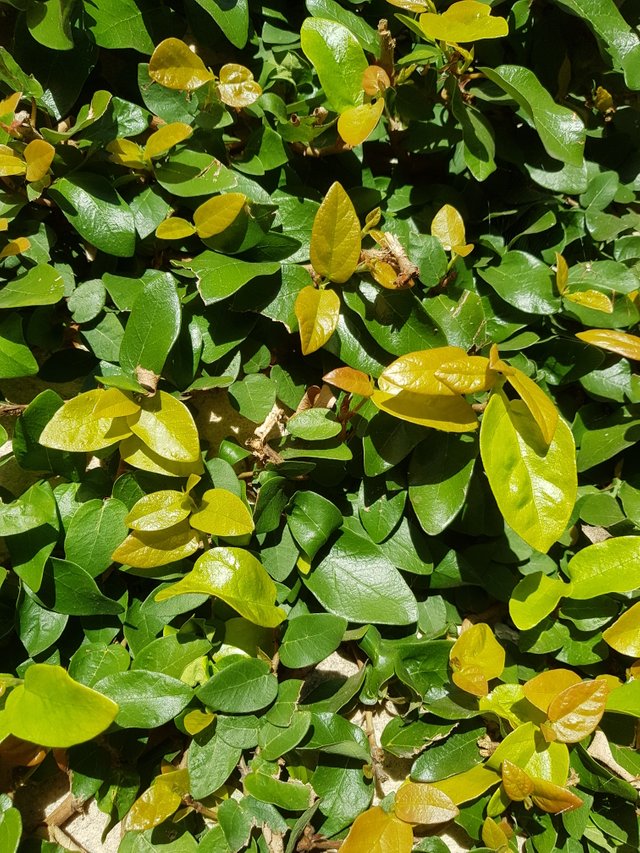 Juvenile foliage
Juvenile foliage 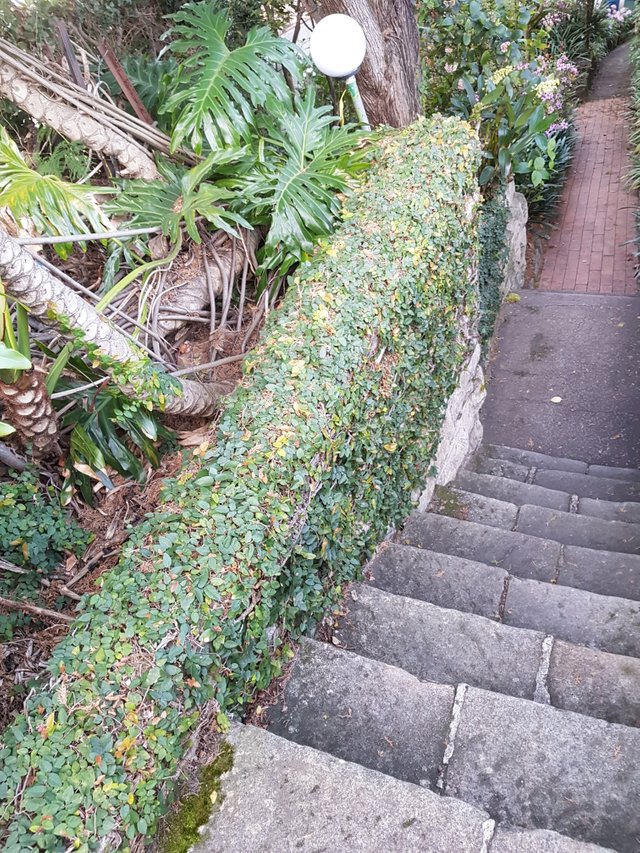
Ficus clings tight to a stone wall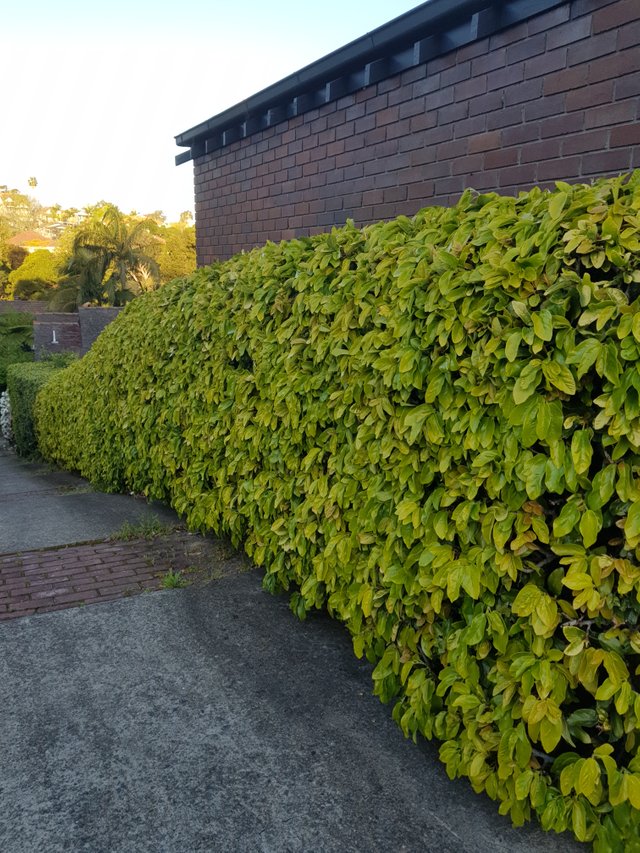
Mature foliage being kept under control as a screen or hedge going down a driveway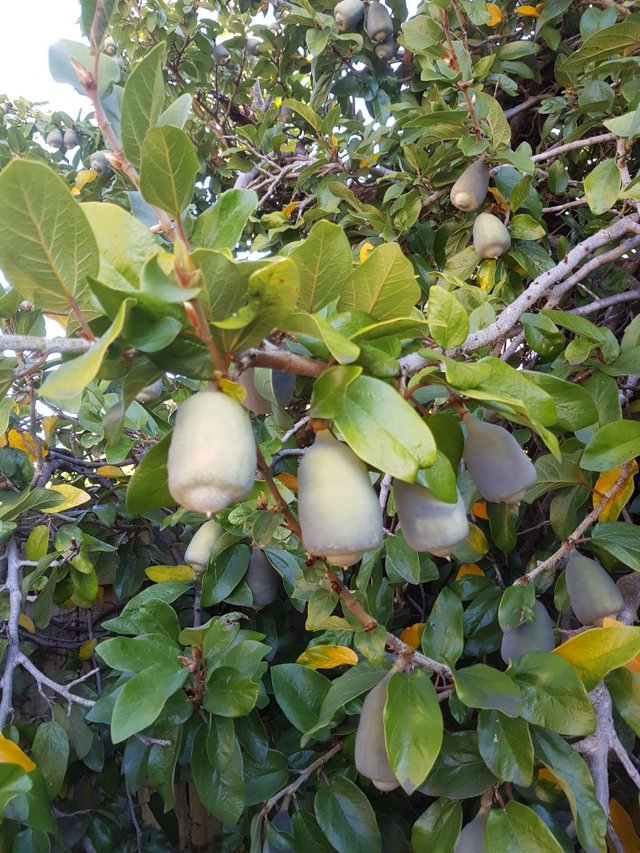
Ugly out-of-control mature growth with fruit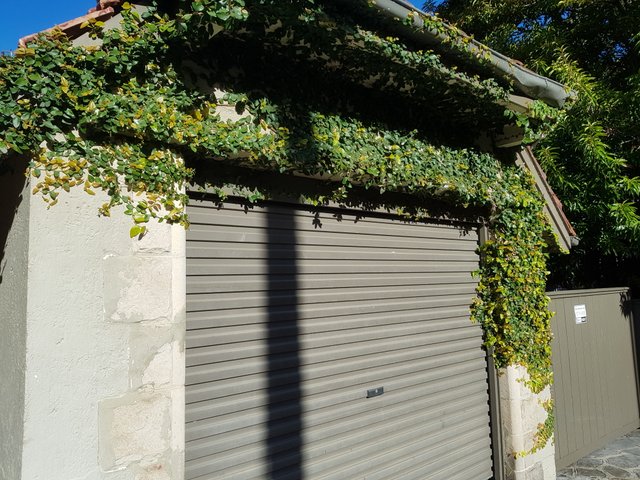
Trained across the entrance to a garage, but starting to get into the gutters, needs a trim !
Creeping dollar plants are most often seen covering fence walls or houses. The Latin name of the creep dollar plant called Ficus Pumila, is a species of flowering plant of the mulberry family. This plant originates from East Asia, most grown in China, Japan and Vietnam. The benefits of dollar propagation for health are numerous, although some issues mention that this plant is dangerous. Creep dollar is used to treat impotence, menstrual disorders, dysuria, dyschezia, rheumatism, lumbago, boils and impetigo.
Today the creep dollar has been cultivated in several regions of the southeast and south of the United States. Pumilus, in Latin means 'dwarf' which refers to the leaves of plants. This plant has long been used as an ingredient in making traditional medicines, especially in the East Asia region. Another name for the creep dollar plant is called Climbing fig, Creeping fig, Fig ivy. And in China it is called P'i-li or Mu-lien (wood lotus).
Ficus Pumila or dollar creep can grow 2.5 to 4 meters. Young leaves appear much smaller and thinner than adult leaves. In its spread, this plant requires Blastophaga pumilae wasps fed Marpesia Petreus butterfly larvae. So that this plant can bear fruit, which is also beneficial for health. Creepage dollars are mostly used as ornamental plants, creeping on the fence walls and houses. Its function to decorate the house is almost the same as tehan tea plant, acalypha siamensis.
The benefits of the creep dollar for health are most effective in treating male complaints compared to women. East Asian traditions have long used this plant to cure several diseases naturally.
Source:
https://www.google.co.id/url?sa=t&source=web&rct=j&url=https://www.jamuin.com/2017/09/20-manfaat-dolar-rambat-ficus-pumila.html%3Fm%3D1&ved=2ahUKEwjxmpya0o_eAhUWUI8KHRxPA2wQFjATegQIBhAB&usg=AOvVaw169R4CNpNStlULhLIBvvas&cshid=1539854415139
Fav. comment Award ! Well done on your choice of Pics.
Shared on twitter promoting good quality content on #Steemit.
#Promo-Steem #steemtalent #JoinSteemit #Steemit
Climb the Walls with Ficus pumila. #STEEM #steemtalent #JoinSteemit #Steemit
#Gardening #GardenersWorld
#Photography #Photographer #Blogging #Blogger
https://twitter.com/StephenPKendal/status/1053010217410199553
You have some very good ideas here i will keep it in mind
Winter hardy to USDA Zones 9-11. In St. Louis, grow indoors as a houseplant or outdoors as an annual ground cover or container plant. Easily grown in a soil-based potting mix. Site indoors in bright indirect light or part shade with protection from afternoon sun. Water regularly during the growing season. Avoid overwatering. Reduce watering from fall to late winter. Prune as needed.
Ficus pumila, commonly called creeping fig, is a vigorous, fast-growing, evergreen, climbing vine that from a distance simply does not look much like a fig. Where it may be grown outdoors, it will climb and cover walls, posts, trellises and other structures by adhesive aerial rootlets.
http://www.missouribotanicalgarden.org/PlantFinder/PlantFinderDetails.aspx?kempercode=b599
Prefers partial shade but will tolerate full sun; adult and juvenile form; often grown as a houseplant or in a greenhouse; drought tolerant; severe cold will kill the vine back to the ground; good climber; not hardy in most of NC; this plant is resistant to damage by deer and is moderately salt tolerant.
https://plants.ces.ncsu.edu/plants/all/ficus-pumila/
This is a good creeper plant to cool down homes and beautify walls @ctrl-alt-nwo but it has to be trimmed always otherwise it will not look good.
@ctrl-alt-nwo,
Wow this plant can be used with Stone Walls! I think my country, we have a similar kind of plant! But not this one! Probably a good solution for fences and walls!
Cheers~
Thank you for an interesting plant, our ficus is grown in indoor conditions and I didn’t even know that it has fruits. In life form, the plant is classified as a liana: the dwarf ficus has a flexible and rapidly growing stem. Stems thin, green with a brownish tinge, very tenacious. In the subtropical climate, where it can grow in open ground, they grow many meters in length, weaving houses, lampposts and tree trunks.
The plant has a creeping shoot and many small leaves on short stalks. Depending on the variety, the plants of this species can have different colors of leaves: with a white border on the edge of the lamina, spots, etc., which gives them a beautiful and unusual appearance.
Ficus reproduces only by vegetative means. To do this, use the cuttings that remain from pruning ficus (pruned preferably in February-March). Cuttings easily take root in water as well as in a moist substrate. You can get ficus seeds only in the greenhouse or in the open field where the plant can bear fruit.
Source: http://proklumbu.com/komnatnue/fikus/pumila.html
Amazing plant, my friend and Ficus pumila - creeping fig vigorous evergreen climber with heart shaped foliage, suited to planting in shaded locations. Trim regularly to maintain fresh foliage.
USES: An ideal solution to unsightly fences and walls. Works well over archways, planted as topiary and even indoors for a little greenery! Plant in hanging baskets to enjoy the cascading foliage.
PLANTING: Plant in a mostly shaded location with plenty of indirect light. Plant in free draining soil rich in organic matter.
CARE: Mulch and water regularly until plant becomes established. Feed with a controlled release yearly during spring and follow up with liquid fertiliser monthly during Summer. Provide extra water during dry periods. Growth can be prolific, trim side shoots & shape as required. Suited to planting in most areas of Australia excluding the highlands and areas around Hobart.
HEIGHT & WIDTH: up to 6m H x 6m W.
PLEASE NOTE: These plants are tube-stock plants, with the benefit of being a young plant they will establish quickly in your garden. The average size of your plants will be 15 -25 cm in height with a pot size of 42 mm wide and 80 mm high.
Thank you @ctrl-alt-nwo
A source of information: http://www.australianplantsonline.com.au/ficus-pumila-creeping-fig.html